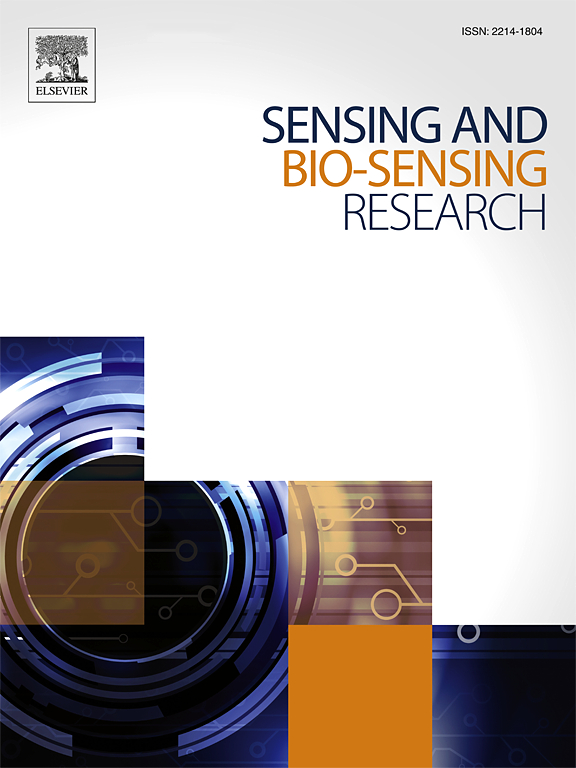Advancing sensitivity with laser-scribed graphene interdigitated electrodes in water quality monitoring
IF 5.4
Q1 CHEMISTRY, ANALYTICAL
引用次数: 0
Abstract
Conventional methods for monitoring water quality are often time-consuming, expensive, and lack sensitivity, making it difficult to detect contaminants before they enter the environment. Therefore, it is essential to develop sensing platforms that address these issues and that are capable of performing on-site detection. As such, in this study, we developed an electrochemical sensing platform for detecting pharmaceutical pollutants in water, particularly paracetamol (PCM) and acetylsalicylic acid (ASP). By minimizing the gap distance between the working and auxiliary electrodes of laser-scribed graphene interdigitated electrodes (LSG-IDEs), the sensitivity of the sensors was improved. The developed platform was compared to a standard LSGE design, and the LSG-IDEs achieved an 18.6-fold and 70-fold improvement in detection limits for PCM and ASP, respectively. The system was tested with real wastewater samples spiked with ASP and PCM, demonstrating its effectiveness in practical scenarios. Additionally, the system was successfully integrated with an on-site detection device, demonstrating its potential for real-time, portable water quality monitoring. The high sensitivity and low-cost of LSG-IDEs make them a suitable option for the monitoring of water quality and protecting public health.

提高激光刻写石墨烯交叉电极在水质监测中的灵敏度
传统的水质监测方法往往耗时、昂贵,而且缺乏灵敏度,难以在污染物进入环境之前检测到它们。因此,开发能够解决这些问题并能够进行现场检测的传感平台至关重要。因此,在本研究中,我们开发了一个电化学传感平台,用于检测水中的药物污染物,特别是对乙酰氨基酚(PCM)和乙酰水杨酸(ASP)。通过减小激光刻写石墨烯交错电极(LSG-IDEs)的工作电极与辅助电极之间的间隙距离,提高了传感器的灵敏度。将开发的平台与标准LSGE设计进行比较,lsg - ide对PCM和ASP的检出限分别提高了18.6倍和70倍。该系统在添加了ASP和PCM的真实废水样品中进行了测试,证明了其在实际场景中的有效性。此外,该系统成功地与现场检测设备集成,展示了其实时、便携式水质监测的潜力。lsg - ide的高灵敏度和低成本使其成为监测水质和保护公众健康的合适选择。
本文章由计算机程序翻译,如有差异,请以英文原文为准。
求助全文
约1分钟内获得全文
求助全文
来源期刊

Sensing and Bio-Sensing Research
Engineering-Electrical and Electronic Engineering
CiteScore
10.70
自引率
3.80%
发文量
68
审稿时长
87 days
期刊介绍:
Sensing and Bio-Sensing Research is an open access journal dedicated to the research, design, development, and application of bio-sensing and sensing technologies. The editors will accept research papers, reviews, field trials, and validation studies that are of significant relevance. These submissions should describe new concepts, enhance understanding of the field, or offer insights into the practical application, manufacturing, and commercialization of bio-sensing and sensing technologies.
The journal covers a wide range of topics, including sensing principles and mechanisms, new materials development for transducers and recognition components, fabrication technology, and various types of sensors such as optical, electrochemical, mass-sensitive, gas, biosensors, and more. It also includes environmental, process control, and biomedical applications, signal processing, chemometrics, optoelectronic, mechanical, thermal, and magnetic sensors, as well as interface electronics. Additionally, it covers sensor systems and applications, µTAS (Micro Total Analysis Systems), development of solid-state devices for transducing physical signals, and analytical devices incorporating biological materials.
 求助内容:
求助内容: 应助结果提醒方式:
应助结果提醒方式:


